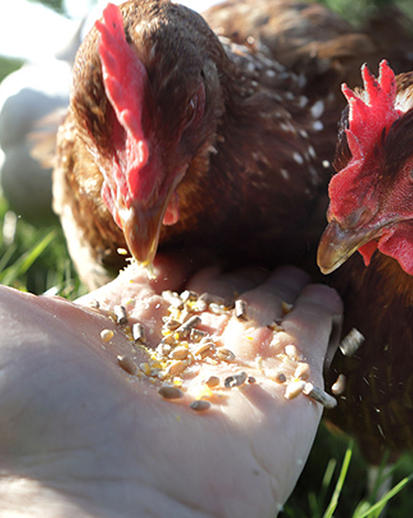Resources & Circularity
Resources & Circularity is one of our Focus Domains. We are committed to securing the future availability of natural resources and unlocking more value from the limited resources we have, by monitoring and improving our own operational impact through resource efficiency improvements, enabling our customers to deliver sustainable and circular solutions, and advocating for the transition to a circular, bio-based economy.
With the global population expected to reach more than 9.7 billion by 20501, the demand for Earth’s resources will only continue to rise. The UN has calculated that in order to sustain our current lifestyles, the equivalent of three planets would be required by mid-century. This makes sense, considering our global economy is only 8.6% circular. In other words, just 8.6% of the 92.8 billion tons of minerals, fossil fuels, metals and biomass that enter the economy are re-used annually, and the trend is negative — the gap is not closing.
We enable our customers to transition toward a circular & bio-based economy by focusing on five drivers:
- Reduce the use of critical resources throughout the value chain
- Replace scarce, hazardous, and potentially harmful resources with safe and renewable alternatives
- Extend the lifetime of products by means of improved durability or shelf-life
- Design for recyclability
- Recover waste streams by viewing waste as a resource
We report our performance on Resources & Circularity based on Renewable & secondary raw materials (addressing the first two drivers above) and Waste (addressing the last driver above).
|
|
Aspiration |
|
2020 |
|
2019 |
||||||
|
|
|
|
|
|
|
||||||
Renewable & secondary raw materials1 |
|
|
|
|
|
|
||||||
Renewable raw materials (% of spend) |
|
|
|
15.2% |
|
14.7% |
||||||
|
|
|
|
|
|
|
||||||
Waste |
|
|
|
|
|
|
||||||
Waste recycled |
|
80–90% in 2020 |
|
85% |
|
86%2 |
||||||
Total process-related waste efficiency improvement |
|
at least maintain |
|
6.3% |
|
2.8% |
||||||
Non-hazardous process-related waste (kt) |
|
|
|
130 |
|
1072 |
||||||
Hazardous process-related waste (kt) |
|
|
|
75 |
|
85 |
||||||
Non-process related waste (kt) |
|
|
|
10 |
|
5 |
||||||
|
||||||||||||
Renewable & secondary raw materials
As part of our focus on Resources & Circularity, we are accelerating our efforts to replace finite fossil resources with regenerative, renewable (bio-based) raw materials, as well as secondary (recycled) materials. Replacing finite resources with alternative renewable resources can also have environmental co-benefits, such as reducing the carbon footprint of our solutions.
Our progress on renewable raw materials
The renewable raw materials we use include waste from agriculture, yeasts and enzymes, carbohydrates and natural oils, and acids. In 2020, the share of our spend on renewable raw materials increased to 15.2%2 from 14.7% in 2019. The percentage increase is due to an increase in spend on enzymes, gelatins and other food additives.
Launching a bio-based alternative for Dyneema®
In 2020, our materials businesses again took big steps forward in driving the transition toward a circular and bio-based economy through the launch of new bio-based and recycled-based innovations. For example, DSM Protective Materials launched its bio-based Dyneema®, which is based on renewable ethylene derived from bio-based feedstock (residue of the wood pulping process). The unique properties of Dyneema® are maintained, enabling customers to adopt a more sustainable solution without compromising process efficiency or final product performance.
Bio-based and recycle-based raw materials in DSM Engineering Materials
By working together with strategic partners, DSM Engineering Materials launched a new recycled-based alternative for high-performance polyamide (PA6), Akulon® CRC-MB, which is used in the automotive, electronics and packaging industries. This polyamide is used for instance to produce a new multi-layer food packaging film in collaboration with SABIC, Cepsa, Fibrant, and film-manufacturer Viscofan. The development of this packaging material underlines a strong commitment from us to work closely with our value chain partners to lead the transition toward more circular and sustainable materials.
DSM announced a new strategic partnership with Neste, whereby DSM Engineering Materials will start replacing a significant proportion of the fossil feedstock used to date in the manufacture of our high performance polymers portfolio with feedstock produced from recycled waste plastics and/or 100% bio-based hydrocarbons. Neste produces its bio-based hydrocarbons entirely from renewable raw materials, such as waste and residue oils and fats. For the production of waste-plastic-derived feedstock, Neste focuses on plastics that cannot be mechanically recycled and have previously been directed to incineration and landfilling.
More information on how we approach sustainable biomass is available in our position paper on Sustainable Biomass on the company website.
Waste
Our definition of waste recycled is the percentage of non-hazardous and hazardous process-related waste that is recovered off-site or, if this is not possible, incinerated off-site with heat recovery. In total, this amounted to 1752 kt out of 205 kt of total process-related waste. We pay careful attention to meeting local waste management legislation. We aim to maintain our percentage of recycled waste in the range of 80–90%, which was achieved in 2020.
Waste breakdown by type and destination
Managing our waste streams
Besides measuring our percentage of recycled waste, we also pay attention to reducing our total amount of process-related waste. In 2020, our total process-related waste efficiency improvement was 6.3%. This is mainly due to significant process improvements at our acquired sites and new ventures. Specific waste reduction programs were run at our main locations such as Dalry (United Kingdom), where calcium was used to restore and rebuild soil profiles.
1 Source: UN
2All data presented in Planet are subject to the non-financial reporting policy.







